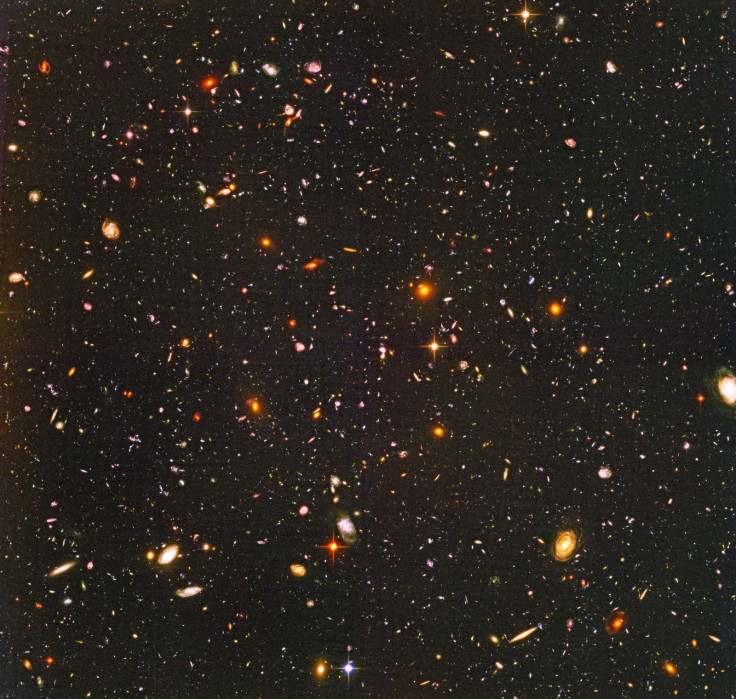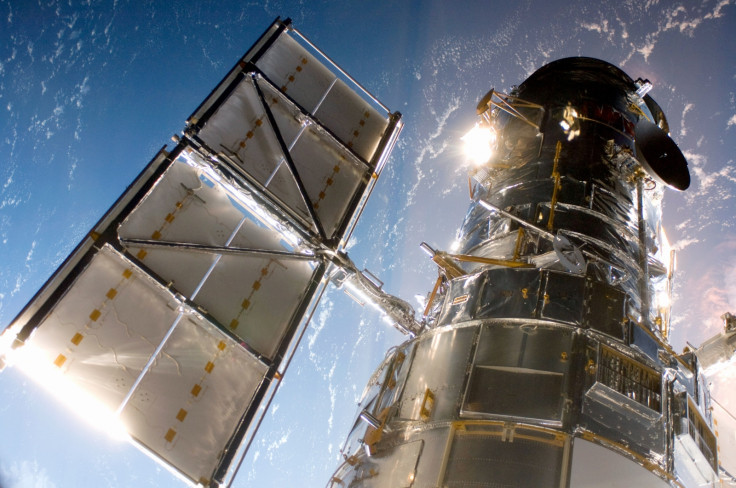Hubble at 25: Anniversary image as Nasa's Jennifer Wiseman talks about the telescope's future
Hubble is expected to continue to operate in space for at least five more years as the 25<sup>th anniversary of the telescope's launch is marked.
Jennifer J Wiseman, senior project scientist for the Hubble Space Telescope at Nasa's Goddard Space Flight Centre, told IBTimes UK they do not know when the world-famous telescope will be decommissioned.
"Hubble is working very well right now so we will keep it operating as long as it's being scientifically productive," she said. "We're hoping that will be quite a few years in the future. Our goal is Hubble 2020 because we believe it will operate well until at least 2020 and hopefully quite a few years beyond that."
She was speaking ahead of the unveiling of the 25<sup>th anniversary image – the star cluster Westerlund2. The image shows a giant cluster of about 3,000 stars, residing in a "stellar breeding ground" called Gum29. It is located about 20,000 light years away in the constellation of Carina.
"It is yet another example of Hubble's spectacular capabilities for showing many interesting features of space," she said.
Hubble was launched on 24 April 1990 almost 70 years after the idea for it was first conceived. It had teething problems, though – the first images that returned were blurry and nothing like what astronomers and scientists had been hoping for.
Wiseman said: "Everyone was greatly anticipating seeing images from space. When you put a telescope above the atmosphere you get much clearer images. When it was launched it was actually quite disappointing when the first images came down because they were somewhat blurry – they weren't sharp. It turned out there was a problem with the way the telescope mirror."

Scientists and engineers worked together to solve the problem and in 1993, a crew of astronauts went up to fix it. "Ever since we've had spectacular images and data coming from the Hubble telescope," she said.
However, it was this hiccup and proceeding drama, Wiseman said, that made Hubble so famous. Since it was fixed, Nasa made a huge effort to make sure all of the images being returned were available to the public. She said: "People have enjoyed the pleasure of seeing these images easily all over the world and in fact those spectacular images of these galaxies and majestic interstellar clouds - they are seen not only on computer screens, but magazine covers, newspapers and even clothing. It's become part of culture to see Hubble images."
And the iconic images keep coming – the anniversary image attesting to that. But Wiseman said her personal favourite is that of the Ultra Deep Fields – images that Hubble took of very deep space.
Wiseman said: "Hubble was able to see a whole collection of distant galaxies that have never been seen before. So if you look at this image you get a feel for how enormous the universe is. Those thousands of galaxies in this tiny field of view would extrapolate to hundreds of billions of galaxies filling our universe. To me that's just awe inspiring."

While Hubble will continue to function for several more years, it will eventually be replaced by the James Webb telescope, which is due to be launched in 2018. Scientists are hoping for a few years of overlap because of the complementary capability of the two telescopes – the James Webb is able observe space in infrared light, while Hubble observes mostly visible light.
However, all good things must come to an end and Hubble's legacy is endemic. Since its launch, there have been over 12,000 scientific papers produces because of its observations.
"You talk about the scientific achievements themselves, some of them were not even imagined when Hubble was launched," Wiseman said. One example is how fast the universe is expanding – with the telescope showing it is speeding up. Another is the detection of dark energy, which is driving the expansion.
"We're even using it to analyse planets outside of our own solar system – these exoplanets that we now know are very numerous. We didn't even know they existed when Hubble was launched."

She said astronomers will be sorry to lose Hubble's capabilities but are excited for future technologies that will lead to new discoveries. Another silver lining, she said, is many new research papers will be based on the data already produced by Hubble, meaning the telescope will be making new discoveries long after it has retired from service.
Eventually, the telescope will degrade to the point it stops working. It will continue to orbit Earth until its orbit decays, at which point Nasa will have to carefully steer it towards Earth. Wiseman said this is likely to be some point in the 2030s.
It will then either be placed in a watery grave, on top of a mountain or into a very high altitude in a "parking orbit for long term storage". She added: "Mostly, you just don't want it to fall to Earth."
© Copyright IBTimes 2025. All rights reserved.






















